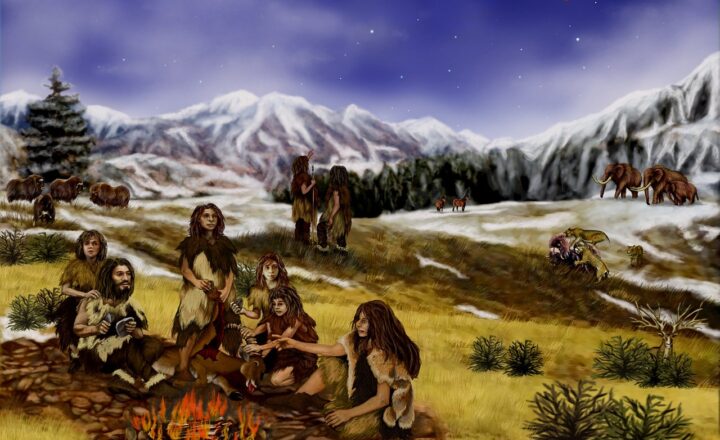How Homo sapiens Adapted to Different Climates and Thrived in Diverse Environments
November 14, 2024

Homo sapiens, our species, is distinguished not only by our intelligence and social structures but also by our remarkable adaptability to a wide range of climates and environments. From the frozen tundras of Siberia to the arid deserts of Africa, we have demonstrated an unparalleled ability to thrive in various ecosystems. This article explores how our ancestors adapted to diverse climatic conditions and the factors that contributed to their survival and success across the globe.
1. The Biology of Adaptation
Adaptation is a biological process through which organisms adjust to their surroundings. In the case of Homo sapiens, several characteristics have contributed to our adaptability:
- Physiological Adaptations: These are changes within the body, such as skin pigmentation, fat distribution, and metabolic efficiency. For instance, populations in harsh UV environments often developed darker skin, which offers better protection from UV radiation, while those in colder climates developed adaptations like a stockier body shape that retains heat more effectively.
- Cultural Adaptations: Culture plays a vital role in adaptation. The development of tools, clothing, shelter, and social structures has enabled Homo sapiens to withstand extreme conditions. Fire, for instance, provided warmth and a means to process food, thus expanding dietary options.
- Cognitive Adaptations: Our advanced cognitive abilities allow us to solve problems, plan for the future, and innovate. This has led to the creation of diverse technologies tailored to specific environments, such as ice fishing tools for Arctic living or irrigation methods in arid regions.
These adaptations combine biology and culture, showcasing our unique ability to modify both ourselves and our environment in response to climatic challenges.
2. Geographic Migration and Climate Variability
Homo sapiens originated in Africa approximately 300,000 years ago. As they migrated beyond Africa, they encountered a variety of climates and terrains. The ability to adapt to these new environments was crucial for their survival.
The timeline of migration and climatic shifts includes:
- Out of Africa Movement: Explains how groups dispersed into Europe, Asia, and eventually to the Americas and Oceania. Each wave of migration brought Homo sapiens into diverse climates that required specific adaptations for survival.
- Ice Ages and Environmental Changes: The most recent Ice Age created drastic changes in habitat. Homo sapiens adapted their hunting strategies by developing new tools and cooperative hunting techniques to take advantage of migrating herds.
- Neolithic Revolution: A shift from nomadic lifestyles to agriculture marked a significant adaptation in response to stable climatic conditions. Agriculture allowed for larger, settled populations, leading to the rise of civilizations and advanced societies.
These patterns of migration not only facilitated survival but also fostered cultural exchanges that further drove innovations in adaptation.
3. Case Studies of Adaptation Across Climates
Exploring specific instances of adaptation can provide insights into how Homo sapiens have thrived in varied environments.
3.1 Arctic Environments
In extremely cold climates, such as the Arctic, Homo sapiens developed specialized strategies:
- Clothing and Shelter: The development of warm clothing from animal skins and the construction of insulated huts were critical. Our ancestors learned to utilize available resources to create effective shelter from harsh weather conditions.
- Dietary Adaptations: Subsistence strategies shifted towards hunting marine mammals and fishing, showcasing the ability to exploit local resources for survival.
3.2 Desert Environments
In contrast, in arid landscapes:
- Water Conservation: Knowledge of seasonal water sources allowed for sustainable survival in areas like the Sahara. Tools for digging wells or creating moisture-retaining storage solutions were crucial innovations.
- Mobile Lifestyle: Semi-nomadic lifestyles enabled adaptation to scarce resources by following migratory routes of both flora and fauna.
3.3 Tropical Environments
In lush tropical environments:
- Agricultural Techniques: The beginning of agriculture in places like Mesoamerica led to innovations such as slash-and-burn farming, which allowed for efficient clearing of land for crops. This sustainable practice exemplified early human ingenuity in adaptation to rich but challenging landscapes.
- Social Structures: Communities formed that collaborated in farming and gathering, showcasing social adaptation alongside environmental.
These case studies illustrate the extraordinary range of adaptations made by Homo sapiens in response to diverse environmental challenges.
4. Technological Innovations that Aided Adaptation
Technology has been pivotal in how Homo sapiens adapted to varying climates. Innovation has always been part of our survival toolkit:
- Fire: This discovery allowed our ancestors to cook, stay warm, and deter predators, marking a key transition in human survival strategies. Fire also facilitated social interactions and shared meals, strengthening community bonds.
- Tool Making: The development of specialized tools for hunting, crafting, and building has greatly enhanced human adaptability. The ability to produce tools tailored to specific environments demonstrates the interplay between environmental demands and technological ingenuity.
- Agricultural Innovations: The transition to agriculture not only shaped human settlements but also led to advancements in irrigation, crop rotation, and animal husbandry, fundamentally changing our relationship with the environment.
Technological advancements have continued to evolve and remain essential in meeting the challenges posed by new and changing environments.
5. Conclusion: The Ongoing Legacy of Adaptation
The story of Homo sapiens is one of incredible adaptability against the backdrop of a constantly changing world. From biological evolutions to cultural innovations, we have shown the ability to thrive in the face of environmental challenges. As we look to the future, the principles of adaptability remain relevant, not only in the context of climate change and global challenges but also in how we innovate and create sustainable solutions for future generations.
As we navigate an era marked by rapid environmental shifts, understanding our past adaptations can guide our efforts to respond effectively today. Understanding what has allowed us to thrive can inform future strategies in technology, culture, and social structures as we seek to create a resilient world.
Through resilience and innovation, the legacy of Homo sapiens serves as both a testament to our past and a roadmap for our future journeys on this planet.








